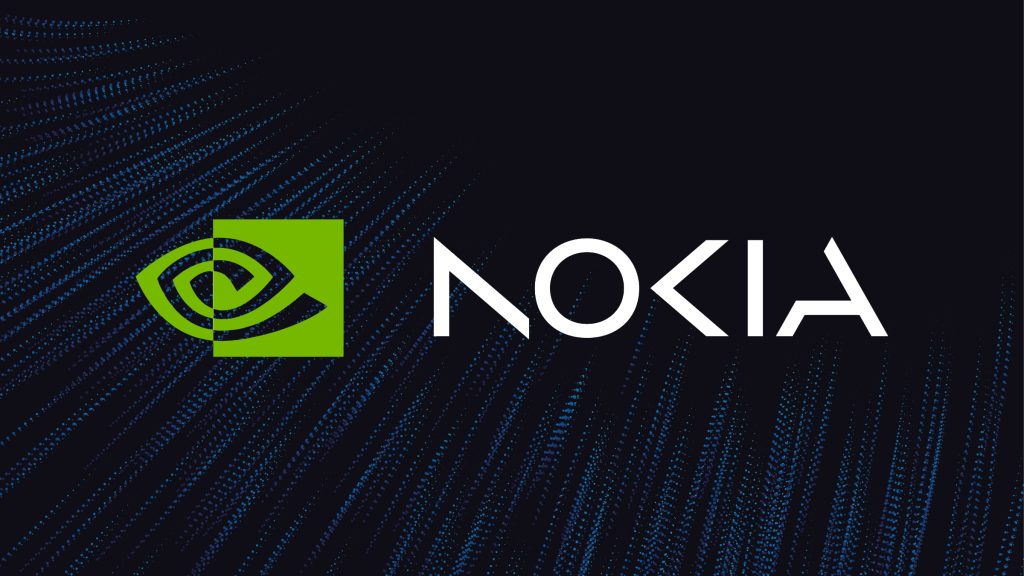
On October 29, NVIDIA announced new partnerships with Nokia and Samsung in Finland and South Korea to integrate 6G and AI into mobile networks and chipmaking, bringing intelligent processing closer to the edge.
This shapes the roadmap to 6g AI empowered wireless networks.
Now, there is a growing role for NVIDIA beyond graphics and data centers. By partnering with major telecom and chipmaking players, the company is contributing to laying the bedrock for the next era in 6G AI, where computing and connectivity combine to create faster, more intelligent communications systems.
6G and AI to Make Networks Smarter
Increased AI use on phones and business systems puts new pressure on telecom networks. Today, apps and devices demand instantaneous responses which means operators must rapidly move data processing closer to towers and antennas. NVIDIA and Nokia focus on 6G AI native development to meet this challenge by enabling faster communication at reduced latency.
Under the deal, NVIDIA will invest $1 billion in Nokia pending approval and bring its Aerial RAN Computer Pro (ARC-Pro), a platform integrating computing and radio functions. This system enables upgrades through software rather than full hardware replacements, helping operators cut costs and modernize faster.
For Nokia, this marks the beginning of the AI-native wireless era, noting that it will improve performance for devices using 6G artificial intelligence features like drones, AR glasses, and connected vehicles.
NVIDIA’s CEO Jensen Huang described telecommunications as a “critical national infrastructure — the digital nervous system of our economy and security.”
The new systems are expected to help develop artificial intelligence for 6G, supporting seamless communication between devices and applications. Analysts believe this may redefine how telecom operators manage network performance during heavy traffic and industrial automation.
Market analysts say the partnership also might have an impact on 6G IoT integration, a setting where billions of devices communicate through real-time networks. Analyst Tero Kuittinen described the deal to Yle as “a relief” for Nokia after years of decline and added that a major AI partner will make it stronger in the global race of the telecommunications industry.
AI factories, the Next Generation of Chips
Another major project was announced by NVIDIA in South Korea. It joined forces with Samsung Electronics to build an “AI Megafactory” powered by 50,000 NVIDIA GPUs.
The factory will merge AI computing with advanced chip production for the first time, marking a key step in 6G and smart cities development through connected and intelligent infrastructure.
“We are at the dawn of the AI industrial revolution — a new era that will redefine how the world designs, builds and manufactures,” said Jensen Huang.
On the other hand, Samsung Chairman Jay Y. Lee called it “a continuation of our long partnership with NVIDIA.
“we are thrilled to continue our longstanding journey with NVIDIA in leading this transformation as we envision creating new standards for the future and accelerating breakthroughs for the world,” he said.
The factory will also back research into 6G market leaders, thereby enabling firms and governments to prepare for their future standards of communication. Samsung intends to create virtual copies of its manufacturing lines with digital twins through the use of NVIDIA’s Omniverse platform.
As Samsung continues refining its chip-making processes, it aims to take the front in integrated AI and 6G by bringing together advanced semiconductors with AI-driven workflows. NVIDIA’s technologies will be instrumental in driving ultra-large-scale improvements in simulation, design, and fabrication.
The partnership also reflects efforts toward building the 6G backbone, where data moves seamlessly between the cloud systems and local edge devices. Both companies are experimenting with edge computing for 6G, ensuring faster analytics and reduced latency in real-world applications such as robotics and connected vehicles.
Finally, by integrating data, simulation, and automation, Samsung and NVIDIA are also laying the groundwork for cloud native 6G networks. These will enable industrial automation, digital twins, and smart manufacturing, demonstrating how 6G and AI can be combined to provide the basis for a fully connected intelligent world.
Inside Telecom provides you with an extensive list of content covering all aspects of the tech industry. Keep an eye on our Telecom sections to stay informed and up-to-date with our daily articles.